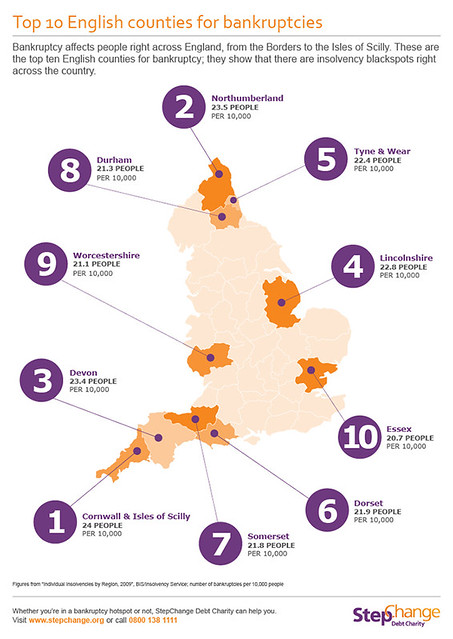The economy is in very bad shape right now. A poor economy means more people than ever have debt and are losing their jobs. Too much debt can lead to bankruptcy and all of its ill effects. If you, a friend, or a loved one is in financial trouble, this article could help decide if bankruptcy is the right option.
Filing for bankruptcy is something many people are forced to do when there debts become too much of a burden, and they can no longer afford to pay them. If this is the case for you, you should begin to investigate the legislation in your state. When it comes to bankruptcy, states have varying laws. Your home is safe in some states, but in others it’s not. Do not file before learning about the bankruptcy laws in your state.
Think through your decision to file for bankruptcy carefully before going ahead with it. Avail yourself of other options, including consumer credit counseling, if they are appropriate for your situation. Bankruptcy is a permanent part of your credit, so before you make such a big decision, you might want to explore all other choices so that your credit history is affected as minimally as possible.
One critical element for anyone filing a petition for bankruptcy is to be honest in everything you do. Lying on your filing can cause dire consequences such as: delays, penalties, being prevented from re-filing, or even jail time.
After a bankruptcy, you may not be able to receive any credit cards. If that is the case, you should try applying for one, or two secured cards. This demonstrates to creditors that you are making a good faith effort to repair your credit. Once creditors see that you are making an effort to restore your credit, they may allow you to get an unsecured card in the future.
Prior to filing your bankruptcy petition, go over the list of assets that cannot be seized by creditors. The Bankruptcy Code has lists of various asset types that are exempt during the process. Make sure that you review this list before you decide to file, to see if you can hang on to your most important possessions. If you fail to go over this list, you may be unpleasantly surprised sometime down the road if any of your most valued items are seized.
Do not give up. If you file for bankruptcy at the right time it could enable you to get your property back that you lost to repossession. If it has been 90 days or less between the repossession of your property and your filing, you might be able to get your property back. Get help from your lawyer to file a petition so you can get your items back.
Since it is possible to obtain a free consultation from the majority of bankruptcy lawyers, meet with a few of them prior to choosing one. Always ensure that the person you meet with is a real lawyer, not a legal assistant or paralegal. These people can’t give legal advice. Considering several different lawyers can help find someone to trust.
Protect your house. Filing for bankruptcy does not mean you have to lose your home. It is entirely possible that you will be able to keep your home. This is dependent upon the your home’s value and whether or not you have taken a second mortgage. There are also homestead exemptions which, depending on your other finances, may allow to remain in your home.
Although the economy appears to be improving, there are many, like you, who are still struggling financially. Just keep in mind that there are resources available to help you to avoid using bankruptcy, even if you do not have steady income. With any luck, you now see that options exist to help you steer clear of bankruptcy. Good luck to you.
